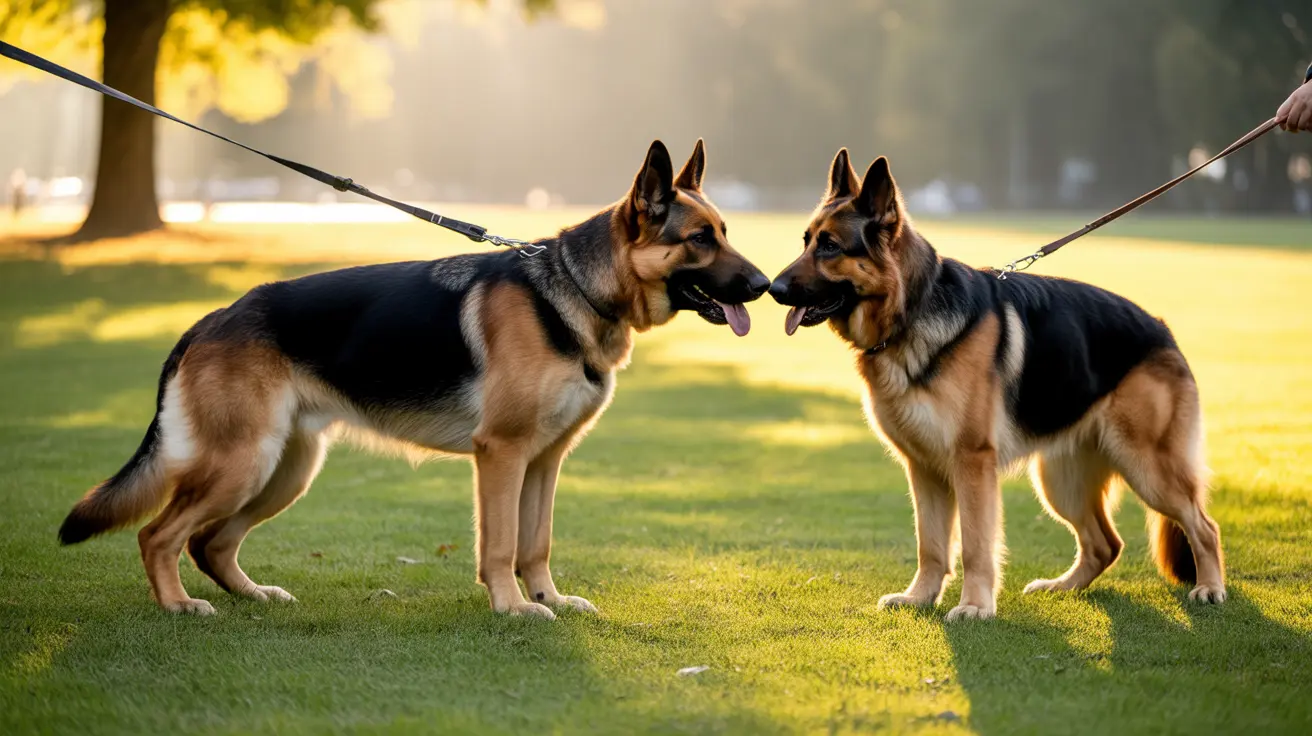Many dog lovers consider adding a second German Shepherd to their family, but wonder if these intelligent, energetic dogs can peacefully coexist. The good news is that with proper introduction, training, and management, two German Shepherds can not only live together harmoniously but also form a strong, enriching bond that benefits both dogs and their human family members.
In this comprehensive guide, we'll explore everything you need to know about successfully raising and managing two German Shepherds under one roof, from initial introductions to long-term care strategies.
Setting the Foundation for Success
Before bringing a second German Shepherd home, it's crucial to understand that success begins with careful planning and preparation. These intelligent, territorial dogs need structured introductions and consistent management to develop positive relationships.
Consider the following factors before committing to a two-German Shepherd household:
- Adequate living space for two large, active dogs
- Financial resources for double food, vet care, and supplies
- Time commitment for individual training and exercise
- Current dog's temperament and socialization level
The Introduction Process
First impressions matter significantly when introducing two German Shepherds. The initial meeting should occur on neutral territory, such as a quiet park or unfamiliar yard, where neither dog feels territorial.
Key steps for successful introductions include:
- Using separate handlers for each dog
- Maintaining loose leashes to prevent tension
- Allowing natural, calm interactions
- Rewarding positive behavior
- Watching for stress signals or aggression
Managing Daily Life Together
Once the initial introduction phase is complete, establishing clear routines and boundaries helps maintain harmony between two German Shepherds. Each dog should have:
- Their own feeding station and schedule
- Separate resting areas and beds
- Individual toys and chews
- Designated one-on-one time with owners
Training and Leadership
Consistent training is essential for managing two German Shepherds effectively. Both dogs need to recognize their owners as pack leaders and understand household rules and expectations.
Focus on:
- Individual training sessions for focused learning
- Group training to reinforce pack dynamics
- Consistent commands and expectations
- Regular exercise and mental stimulation
The Benefits of Two German Shepherds
When properly managed, having two German Shepherds can offer numerous advantages:
- Constant companionship for both dogs
- Enhanced physical activity through play
- Improved socialization skills
- Reduced separation anxiety
- Built-in protection team
Common Challenges and Solutions
While rewarding, managing two German Shepherds comes with specific challenges that require attention:
- Resource guarding: Establish clear feeding routines and multiple resource locations
- Dominance issues: Maintain consistent leadership and intervention
- Exercise needs: Ensure adequate physical and mental stimulation
- Training complexity: Consider professional help when needed
Frequently Asked Questions
How do I introduce two German Shepherds to each other for the first time?
Introduce them on neutral territory, keep both dogs leashed, and use separate handlers. Allow them to interact gradually while maintaining a calm environment. Watch their body language and reward positive interactions.
Can raising two German Shepherds together negatively affect their bond with me as their owner?
While two German Shepherds can become closely bonded, maintaining strong individual relationships through one-on-one training, separate play sessions, and dedicated attention time with each dog helps prevent this issue.
What are the key training tips for managing two German Shepherds in the same household?
Focus on consistent rules, individual and group training sessions, clear communication, and establishing yourself as the pack leader. Maintain regular exercise routines and provide mental stimulation for both dogs.
How can I prevent resource guarding and jealousy between two German Shepherds?
Provide separate feeding areas, multiple water bowls, and duplicate toys. Never force dogs to share resources, and supervise interactions around high-value items. Reward calm, sharing behavior when it occurs naturally.
What are the benefits of having two German Shepherds as opposed to one?
Two German Shepherds can provide each other with companionship, exercise through play, enhanced security, and improved socialization opportunities. They often help reduce separation anxiety and keep each other mentally stimulated.
Conclusion
Successfully managing two German Shepherds requires dedication, consistency, and proper planning, but the rewards can be tremendous. With appropriate introduction, training, and ongoing management, these intelligent dogs can form a cohesive family unit that brings joy and companionship to all involved.






